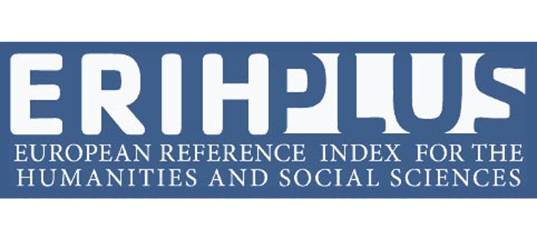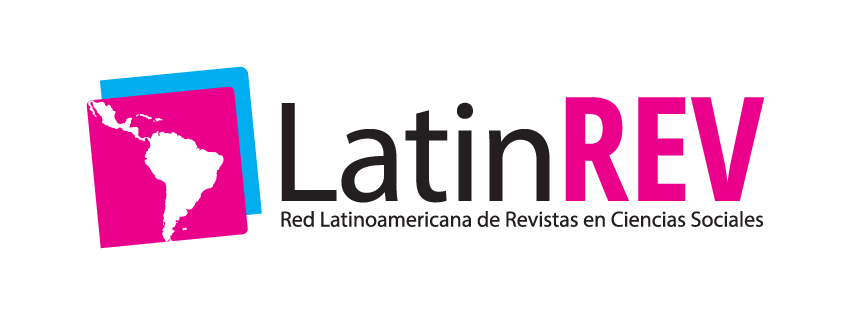Management of construction and demolition waste, to mit-igate environmental impact and preserve our natural re-sources: A literature review
Abstract
Many countries have made progress in the construction aspect. They talk about the large projects that have been carried out, such as the construction of huge skyscrapers, among other constructions, but they do not talk about the negative impacts on the environment that they generate. One of the main generators of the negative impact generated by construction is construction and Demolition Waste (RCD). These are dumped in unauthorized places, such as open fields, rivers, abandoned land, etc. Only rarely are they dumped in landfills, which is authorized. The objective of this research is to review the steps taken by the different countries, in order to minimize the impact they generate, through a descriptive analysis and a documentary compilation of the years 2015 - 2020; taking as a sample the different investigations through 29 scientific articles, 12 of these from the scientific base of Scopus and 17 from ScienceDirect, which date from supervisory political measures, processing plants, incentives to recycling companies, reuse of waste with different methodologies, etc., highlighting the ecological importance that includes reusing waste through these steps that are for the good of the environment. From the systematic review it is concluded that the use of processing plants with Advanced Dry Recovery (ADR) technologies and the Heating Air Classification System (HAS) is an effective way to crush concrete waste and convert it into recycled aggregates, turning them into reusable material for construction purposes.
Downloads
Metrics
References
Brasileiro, L., & Mato, J. (2015). Literature review: reuse of construction and demolition waste in the construction industry. Ceramics, 61(358), 178-189. https://doi.org/10.1590/0366-69132015613581860.
Comisión Europea. (2017). Resource Efficient Use of Mixed Wastes Improving management of construction and demolition waste. Brussels. Obtenido de https://ec.europa.eu/environment/waste/
Contreras, Teixeira, S., Lima, L., Cardoso, Silva, D., Gregório, G., . . . Dos Santos, A. (2016). Recycling of construction and demolition waste for producing new construction material (Brazil case-study). Construction and Building Materials, 123, 594-600, http://doi.org/10.1016/j.conbuildmat.2016.07.044.
Cruz, A., Calderon, E., Franca, B., Réquia, W., & Gioda, A. (2019). Evaluación del impacto de los juegos Olímpicos Rio 2016 en la ciudad del aire en la ciudad de Rio de Janeiro, Brasil. Atmos Environ, 203, 206-215.
Gebremariam, A. T., Di Maio, F., Vahidi, A., & Rem, P. (2020). Innovative technologies for recycling End-of-Life concrete waste in the built environment. Resources, Conservation and Recycling, 163, http://doi.org/10.1016/j.resconrec.2020.104911.
Guerra, B. C., Leite, F., & Faust, K. M. (2020). 4D-BIM to enhance construction waste reuse and recycle planning: Case studies on concrete and drywall waste streams. Waste Management, 116, 79-90. https://doi.org/10.1016/j.wasman.2020.07.035.
Gul, P., Atilla , D., Harun , T., & Gurgun, A. (2017). Identification of root causes of construction and demolition (C&D). Procedia Engineering, 196. , 948 – 955. http://doi.org/10.1016/j.proeng.2017.08.035.
Hameed, A., & Hamza, M. (2019). Characteristics of polymer concrete produced from wasted construction materials. Energy Procedia, 157, 43-50. http://doi.org/10.1016/j.egypro.2018.11.162.
Ikau, R., Corina Joseph, & Tawie, R. (2016). Factors Influencing Waste Generation in the Construction Industry in Malaysia. Procedia - Social and Behavioral Sciences, 234, 11–18. http://doi.org/10.1016/j.sbspro.2016.10.213.
Jayatheja, M., Guharay, A., Kar, A., & Kumar Suluguru, A. (2020). Building Derived Materials—Sand Mixture as a Backfill Material. Sustainable Environment and Infrastructure. Lecture Notes in Civil Engineering, 90, 437-446. http://doi.org/10.1007/978-3-030-51354-2_40.
Kabirifar, K., Mohammad, M., Wang, C., & Tam, V. (2020). Construction and demolition waste management contributing factors coupled with reduce, reuse, and recycle strategies for effective waste management: A review. Journal of Cleaner Production, 263, 121265, http://doi.org/10.1016/j.jclepro.2020.121265.
Krausmann, F., Wiedenhofer, D., Lauk, C., Haas, W., Tanikawa, H., Fishman, T., . . . Haberl, H. (2017). Global socioeconomic material stocks rise 23-fold over the 20th century and require half of annual resource use. Proceedings of the National Academy of Sciences of the United States of America (PNAS), 114(8), 1880-1885. doi:https://doi.org/10.1073/pnas.1613773114
Li Ma, & Zhang, L. (2020). Evolutionary game analysis of construction waste recycling management in China. Resources, Conservation and Recycling, 161, http://doi.org/10.1016/j.resconrec.2020.104863.
Liu, J., Yi, Y., & Wang, X. (2020). Exploring factors influencing construction waste reduction: A structural equation modeling approach. Journal of Cleaner Production, 276(10),123185, http://doi.org/10.1016/j.jclepro.2020.123185.
Lu, W., & Tam, V. (2013). Construction waste management policies and their effectiveness in Hong Kong: A longitudinal review. Renewable and Sustainable Energy Review, 23, 214-223, http://doi.org/10.1016/j.rser.2013.03.007.
Lu, W., Peng, Y., Webster, C., & Zuo, J. (2015). Stakeholders’ willingness to pay for enhanced construction waste management: A Hong Kong study. Renewable and Sustainable Energy Reviews, 47, 233-240, http://doi.org/10.1016/j.rser.2015.03.008.
Mao, R., Duan, H., Gao, H., & Wu, H. (2016). Characterizing the Generation and Management of a New Construction Waste in China: Glass Curtain Wall. Procedia Environmental Sciences, 31, 204-210. https://doi.org/10.1016/j.proenv.2016.02.027.
Olanrewaju, S., & Ogunmakinde, O. E. (2020). Waste minimisation strategies at the design phase: Architects’ response. Waste Management, 118, 323-330. https://doi.org/10.1016/j.wasman.2020.08.045.
Patty, R., Bera, D., & Rath, A. (2020). Strategies for construction and destruction (C&D) waste management. Recent Developments in Sustainable Infrastructure. Lecture Notes in Civil Engineering, 75, 879-889, http://doi.org/10.1007/978-981-15-4577-1_74.
Peixoto Rosado, L., Vitale, P., Penteado, & Arena, U. (2019). Life cycle assessment of construction and demolition waste management in a large area of São Paulo State, Brazil. Waste Management, 85, 477-489, http://doi.org/10.1016/j.wasman.2019.01.011.
Sekkel, A., Mostefa Kara, E., Klouche, F., & Bireche, S. (2020). Valorization of concrete waste in swelling clay’s treatment. Innovative Infrastructure Solutions, 6(10), http://doi.org/10.1007/s41062-020-00373-0.
Shahzad Aslam, M., Huang, B., & Cui, L. (2020). Review of construction and demolition waste management in China and Usa. Journal of Environmetal Management, 264, 110445, http://doi.org/10.1016/j.jenvman.2020.110445.
Soni, N., & Shukla, D. (2021). Analytical study on mechanical properties of concrete containing crushed recycled coarse aggregate as an alternative of natural sand. Construction and Building Materials, 266, http://doi.org/10.1016/j.conbuildmat.2020.120595.
Stumpf, M., Kern, A., & Maciel, T. (2016). Propuesta de un sistema de planificación y control de residuos en la construcción. Revista ingeniería de construcción, 31(2), http://doi.org/10.4067/S0718-50732016000200004.
Su, Y., Si, H., Chen, J., & Wu, G. (2020). Promoting the sustainable development of the recycling market of construction and demolition waste: A stakeholder game perspective. Journal of Cleaner Production, 277, http://doi.org/10.1016/j.jclepro.2020.122281.
Torres, A., Brandt, J., Lear, K., & Liu, J. (2017). A looming tragedy of the sand commons (Review). Science, 357(6355), 970-971. https://doi.org/10.1126/science.aao0503.
Vasconcelos e Freita, C., Leite dos Santos, V., dos Santos , J., & Carvalho da Silva, T. (2016). A case study in waste processing plant in petrolina-PE. [Reciclagem de resíduos de construção e demolição (RCD): Um estudo de caso na usina de beneficiamento de resíduos de Petrolina-PE]. Revista De Gestao Social e Ambiental, 10(1), 93-109. http://doi.org/10.24857/rgsa.v10i1.1121.
Vidyashree, V., Mamath, K., & Dinesh, S. (2020). Strength Characteristics of Cement-Stabilized Recycled Asphaltic Pavement (RAP) for Pavement Applications. Recent Trends in Civil Engineering, 77, 351-361. http://doi-org-443.webvpn.fjmu.edu.cn/10.1007/978-981-15-5195-6_28.
PDF (Español (España)) 1099 HTML (Español (España)) 0
Authors maintain the rights to the articles and are therefore free to share, copy, distribute, execute, and publicly communicate the work on their personal websites or in institutional deposits, after its publication in this journal, as long as they provide bibliographic information that certifies its publication in this journal.
The works are under one https://creativecommons.org/licenses/by-nc-nd/4.0/




























